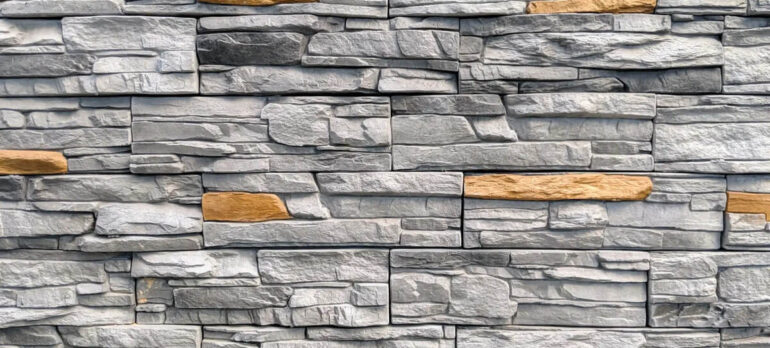
Let’s face it, selecting the appropriate cladding for your house is more difficult than it has to be. I’ve worked with designers, architects, and even the pickiest homeowners for years, and I’m here to explain everything to you. This book is for you whether you’re flipping a fixer-upper or remodeling your everlasting home.
Your climate, financial situation, and aesthetic tastes all influence the finest cladding for your home. The best options are fiber cement (cheap and fireproof), brick veneer (traditional and insulating), aluminum (long-lasting and low-maintenance), and wood (warm and natural). Aluminum cladding, such as that found in XtraMetal’s systems, is a popular choice for contemporary appearance and functionality.
Avoid the error of selecting cladding purely on the basis of appearance. I’ll go over all the important details in the following few minutes, along with the advantages and disadvantages of each main topic.
The Evolution and Materials of Interior Wall Cladding
The history of wall cladding begins with the ancient Egyptian, Greek, and Roman civilizations. In order to make protective wall coverings, people combined mud, clay, and straw and placed it over wooden supports. From simple functional components, these early solutions developed into intricate decorative pieces that demonstrated money and skill.
The gypsum-based plastering methods known as “wattle and daub” gained popularity during the Middle Ages. These techniques provided insulation as well as aesthetic appeal. A significant shift occurred during the Tudor period (1485-1603). Interior wall treatments became works of art because to elaborately carved oak paneling.
Using mahogany, walnut, or oak, the Georgian era (1714–1830) introduced a new approach with simpler, more symmetrical designs. The Victorian era (1837–1901) returned to intricate decoration, demonstrating the era’s passion for ornate detail.
Contemporary interior wall cladding designs are now available in a range of materials with special qualities:
Although solid wood panels are naturally strong and beautiful, they require routine maintenance and are susceptible to moisture damage. Despite its poor water resistance, Medium Density Fibreboard (MDF) provides a consistent, smooth surface that is ideal for painting or laminating.
Thermoplastics and wood fiber are combined to make Wood Plastic Composite (WPC), a material that is more moisture-resistant than pure wood. PVC panels are perfect for bathrooms and kitchens because of their exceptional water resistance and ease of maintenance.
Another dependable choice that resists termites, fire, rot, and moisture damage is fiber cement panels. These panels perform admirably in damp and busy environments.
3D panels, which give contemporary environments dimension and texture, are another example of innovation. Glass panes give off a sleek, modern appearance. Additionally, fabric panels are now used to insulate home theaters and bedrooms from noise.
House Cladding: What Is It?
Cladding is the material that is put to the outside walls of your home; it is essentially the “skin” of your house. But it goes beyond appearances. Your home is shielded from heat, wind, and rain by cladding. When done correctly, it also increases property value, lowers energy costs, and enhances insulation.
The Three Functions of Cladding Defense: You want to protect your home from the weather, so consider things like rain, UV rays, hail, and snow.
Insulation: By establishing a thermal buffer, certain cladding alternatives can keep your house warmer in the winter and cooler in the summer.
Aesthetics: People notice it right away. Your home’s style is defined by its cladding, whether it’s bold, minimalist, rustic, or futuristic.
Types of Wall Cladding Materials
The market is filled with a variety of wall siding materials.Here are a few typical choices:
Wood cladding gives structures a timeless and hospitable appeal because of its warm, natural appearance. Because of its superior insulating qualities, it lowers energy expenses and helps to manage indoor temperatures. When wood comes from sustainable forests, it is an environmentally favorable option because it is a sustainable and renewable resource.
Metal cladding is renowned for being strong and long-lasting. It is a dependable choice for numerous applications because it can tolerate severe weather and physical harm. For many home owners, metal cladding offers the major benefit of low upkeep. Furthermore, it comes in a range of hues and textures, enabling a contemporary and adaptable look.
One notable feature of vinyl cladding is its affordability, which allows it to be used without sacrificing performance. Because it is simple to clean and resilient to many common problems, it requires little upkeep. Because vinyl cladding comes in so many different colors and styles, it can be used in a variety of architectural types and offers design freedom.
Brick cladding gives any building a classical appeal with its ageless and classic appearance. It is well known for being extremely durable and requiring little upkeep. Additionally, brick has strong insulating qualities, which help with soundproofing and energy conservation.
Stone cladding gives structures a sophisticated, organic look that improves their aesthetic appeal. It can tolerate physical wear and the environment and is incredibly long-lasting and durable. In addition to being minimal maintenance, stone cladding just needs to be cleaned occasionally to maintain its elegant appearance.
Fiber Cement Cladding is renowned for its resilience to weather and longevity, which makes it appropriate for a variety of environments. It requires little effort to maintain both its performance and look. Fiber cement offers strong protection and aesthetic flexibility by simulating the appearance of stone or wood.
Because composite cladding is made of a variety of materials, its performance and durability are improved. It comes in a large variety of colors and styles, offering a plethora of design choices to accommodate various tastes. Because composite cladding resists insects and rust, it is a long-lasting and low-maintenance option.
Factors to Consider When Choosing Wall Cladding
Take into account the following elements while selecting the ideal wall siding material for your house:
- The weather
When choosing the ideal wall cladding material, your local environment is a major factor. For instance, you need a water-resistant material like metal or fiber cement if you reside in an area that experiences a lot of rainfall. Select a material that provides good thermal insulation if you live in a hot region.
- The budget
Your choice will also be influenced by your budget. While vinyl is more reasonably priced, other materials, such as stone and wood, might be more costly. Don’t forget to account for both the initial outlay and ongoing maintenance costs.
- Visual Appeal
Select a material that blends in with your home’s design and decor. Stone or wood can be your best option if you like a natural appearance. Think of using composite or aluminum cladding for a sleek, contemporary look.
- Maintenance
The amount of care needed varies depending on the material. For instance, metal and vinyl require little upkeep, but wood requires frequent painting and sealing. Think about how much time and work you are prepared to put into keeping your cladding in good condition.
- Sturdiness
Particularly for external cladding, durability is an important consideration. Select a material that is long-lasting and resistant to weather. Fiber cement, stone, and metal are renowned for their longevity.
- Installation
Installing certain materials is simpler than others. Homeowners can frequently install vinyl and composite cladding, but professionals are needed to install stone and brick. Think about the installation procedure and if you will require professional assistance.


